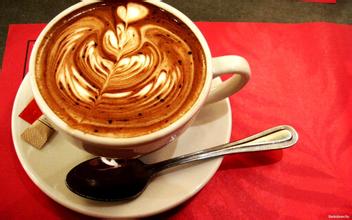Ecuador Coffee Estate Flavor Taste Features Boutique Coffee Introduction Santa Cruz Estate
Ecuador has a presidential system. On 26 November 2006, Correa, a candidate of the Sovereign Motherland Movement, was elected president in the second round of presidential elections and took office on 15 January 2007. Immediately after taking office, Coe promoted the convening of the Constituent Assembly. On April 15, 2007, Eritrea decided to hold a Constituent Assembly in a referendum with an approval rate of 81.72%. In September, Eritrea held an election of representatives to the Constituent Assembly, and the ruling party, the Sovereign Motherland Union, won 61% of the seats. In July 2008, the Constituent Assembly adopted the new draft constitution. In September, the new constitution was passed in a referendum with 63.94% of the vote. In October, the new constitution was formally promulgated and implemented. In April 2009, Eritrea re-held presidential, parliamentary and local government elections in accordance with the new constitution, and Correa was re-elected president. On September 30, 2010, large-scale police protests broke out and riots broke out in major cities such as Quito, Ecuador, in protest against the adoption by the National Congress of the Public Service Act, which included provisions for cuts in police and military benefits. President Correa was attacked and was trapped for a time, then rescued with the support of the military, parliament and the international community. On May 7, 2011, Eritrea held a referendum on 10 political and social issues, including judicial reform and media control, all of which were adopted. Since 2012, the political situation in Eritrea has remained stable. The president is the country's top executive. The current Government was formed in April 2009 and has since been restructured several times to include 11 State Secretariats, 8 Coordination departments and 20 Executive departments. The current cabinet members are: Vinicio ALVARADO, Secretary of State for Public Administration; Fander FALCON, Secretary of State for National Planning and Development; Fernando Alvarado, Secretary of State for Press; Lorena ESCUDERO, Secretary of State for Immigration; and Mireya Cardenas, Secretary of State for nationalities, Social movements and Citizen participation. Ren é RAMIREZ, Secretary of State for Science and Technology; Mar í a Cornejo, Secretary of State for risk Management; Diego Guzman, Secretary of State for Transparency; Pablo ROMERO, Secretary of State for Intelligence; Betty TOLA, Minister for political Coordination and Local self-Government; Jeannette S Á NCHEZ, Minister for Economic Policy Coordination Minister of Security Coordination Homero Arellano (Homero ARELLANO)
The best Ecuadorian coffee is grown on St. Cristobal Island in the Galapagos Islands, which has the unique natural geographical conditions for giving birth to the best quality coffee in the world. A cup of Galapagos coffee, like the beautiful scenery of the Galapagos Islands, is sure to impress you.
In the mid-15th century, there were legends about enchanted mysterious islands among fishermen fishing in the western Pacific Ocean of South America. It is said that the islands can sometimes be seen clearly from a distance, but when the ship approaches, it disappears again; sometimes it looks like a galleon, sometimes it shows the shape of a witch. Fishermen call these islands "Devil Island", thinking that they may be ruled by demons like the sea banshees in the Odyssey. And this island, which fishermen call "Magic Island", is the best Ecuadorian coffee in today's Galapagos Islands, which is grown on St. Cristobal Island in the Galapagos archipelago. It has the unique natural geographical conditions that breed the best quality coffee in the world. A cup of Galapagos coffee, like the beautiful scenery of the Galapagos Islands, is sure to impress you.
In the mid-15th century, there were legends about enchanted mysterious islands among fishermen fishing in the western Pacific Ocean of South America. It is said that the islands can sometimes be seen clearly from a distance, but when the ship approaches, it disappears again; sometimes it looks like a galleon, sometimes it shows the shape of a witch. Fishermen call these islands "Devil Island", thinking that they may be ruled by demons like the sea banshees in the Odyssey. The island, which fishermen call "Magic Island", is now the Galapagos Islands.
In 1535, Frey Thomas de Belanga of Spain and others stumbled upon the Galapagos Islands. Thomas was born in 1487 on the Douro River in the province of Soria, Spain, and was the fourth bishop of Panama at that time. He was ordered to go to Peru. When his ship set sail from Panama on February 23, under the impact of a strong current, they were taken to the unknown sea, and on March 10, they discovered a small island in the Galapagos Islands. At that time, there were only two days of fresh water left on the ship, and the sailors landed in lifeboats and found a large number of seals, sea turtles, giant tortoises that could carry people, and iguanas that looked like venomous snakes, but they did not find fresh water, so they sailed to another larger island more than 20 kilometers away. As there was still no wind, it took them several days to get there. The water ran out quickly and they had to starve, including the horses on the boat without grass.

Important Notice :
前街咖啡 FrontStreet Coffee has moved to new addredd:
FrontStreet Coffee Address: 315,Donghua East Road,GuangZhou
Tel:020 38364473
- Prev

Introduction of Malt-scented Panamanian Coffee Jade Manor Fine Coffee Bean Flavor
The old world is famous for its ancient morning taste. Yega Xuefei in Sidamo is suitable for sun treatment with its unique small seed coffee, so that the fully ripe fruit is picked by hand, washed and dried on the mat floor, kept in the state of parchment before shipment, and screened by shelling machine.
- Next

Flavor and taste of Ecuadorian boutique coffee beans introduction to Hasunda Coffee Garden
West coast: including coastal plains and foothills, high in the east and low in the west, generally below 200 meters above sea level, with some hills and low mountains at an altitude of 600 to 700 meters. Belongs to the tropical rain forest climate, the southernmost end begins to transition to the savanna climate. The average annual precipitation decreases from more than 3000 mm to about 500mm from north to south. Central Mountains: the Andes enter Ecuador from Colombia
Related
- Does Rose Summer choose Blue, Green or Red? Detailed explanation of Rose Summer Coffee plots and Classification in Panamanian Jade Manor
- What is the difference between the origin, producing area, processing plant, cooperative and manor of coffee beans?
- How fine does the espresso powder fit? how to grind the espresso?
- Sca coffee roasting degree color card coffee roasting degree 8 roasting color values what do you mean?
- The practice of lattes: how to make lattes at home
- Introduction to Indonesian Fine Coffee beans-- Java Coffee producing area of Indonesian Arabica Coffee
- How much will the flavor of light and medium roasted rose summer be expressed? What baking level is rose summer suitable for?
- Introduction to the characteristics of washing, sun-drying or wet-planing coffee commonly used in Mantenin, Indonesia
- Price characteristics of Arabica Coffee Bean Starbucks introduction to Manning Coffee Bean Taste producing area Variety Manor
- What is the authentic Yega flavor? What are the flavor characteristics of the really excellent Yejasuffi coffee beans?

